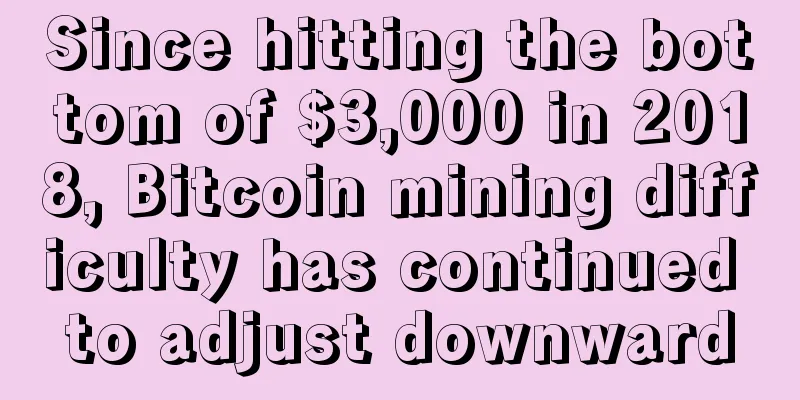Since hitting the bottom of $3,000 in 2018, Bitcoin mining difficulty has continued to adjust downward

|
Bitcoin ’s fundamentals now look like they are at the bottom of the 2018 bear market, with a repeat of the mining network move that has only occurred twice in history. An analysis of Bitcoin’s network difficulty after the latest adjustment on June 4 shows that current market conditions bear similarities to the period when Bitcoin was trading near the low $3,000s. The third largest difficulty adjustment in Bitcoin history This week, the difficulty was adjusted down by 9.3%. Two weeks before that, it dropped by -6%. If the next adjustment is also negative (currently predicted to be -7%), this would be the third time in a row that there have been three difficulty adjustments downwards. The only other time in history that there have been consecutive downward difficulty adjustments, aside from December 2018, is when there have been eight consecutive downward adjustments since 2011. The recurrence of mining difficulty is likely to be significant. Difficulty provides an expectation of miners’ interest in participating in the market, and reducing it will incentivize miners to participate in the verification of transactions on the Bitcoin network. Difficulty adjustments are also key to ensuring Bitcoin’s status as hard money. Difficulty changes occur automatically every 2,016 blocks and allow Bitcoin to adjust predictably without compromising security. Bitcoin mining difficulty chart showing the decline in difficulty in 2018. Source: BTC.com Bitcoin is still “working as it was designed to do” In 2020, the situation became complicated just weeks after Bitcoin’s third block subsidy halving event, which cut miner revenue by 50%. As Cointelegraph reported, mining pools have continued to sell off since then, with miners selling more Bitcoin than they earned from mining. However, for most people, the current behavior is no different than business as usual for Bitcoin.
Lower difficulty will further increase the network’s hash rate as miners increase participation. Computing power (hash rate) has already begun to climb after the halving, and a common theory suggests that Bitcoin price action will follow the rise in hash rate. Three months after the December 2018 low, Bitcoin began a mini-bull run, peaking at nearly $14,000. Last year, a study suggested that Bitcoin should reach a peak price level of 1,000% of its 2018 low one to two years after the third halving. |
<<: Four years ago, Ethereum was on the brink of death, but now it is reborn because of Defi
Recommend
What does a mole on the inside of the hand mean? Does a mole on the inside of the hand mean good fortune?
Moles in different positions have different meani...
A brief discussion on EVM compatibility: Why are non-EVM public chains embracing EVM? What problems are they facing?
Author: Denis Original title: EVM compatibility a...
Judging from the face which people are unfaithful
Love is a world of two people, which requires bot...
Career line palmistry analysis
Feature 1: The career line is clearly visible In ...
Although he has food and entertainment every day, he actually looks very poor.
Some people always give people an illusion that t...
Is it more likely that a woman has a Sichuan-shaped palm?
There are many palm lines in the palmistry diagram...
How to read a man's mouth
In life, you will find that everyone’s facial fea...
KEC coin - computer CPU mining, dual-channel server mining, wallet SOLO mining!
Total supply: 18 000 000 KEC Type: POW/Masternode...
Women's eyes face analysis: what kind of eyes are good
Everyone has their own appearance and characteris...
FIL mining must read: To accelerate the development of web3.0, commercial applications will be opened in September! Buy a mining machine and get FIL coins/U. The future of the bull is promising!
The core mission of Filecoin is to make human dat...
Physiognomy teaches you how to know and change your fate
Physiognomy teaches you how to know and change yo...
Is it a bad look for a man to have short and light eyebrows? What does short eyebrows mean?
In traditional Chinese physiognomy, the thickness...
How to read the success line?
How to read the success line? Detailed explanatio...
Return or NOT, at least the Bitcoin Core Team has no intention of letting Gavin Anderson return
Although the Craig Wright incident has gradually ...
Do women with moles on the soles of their feet have a miserable life?
Moles may appear anywhere on a person's body,...









